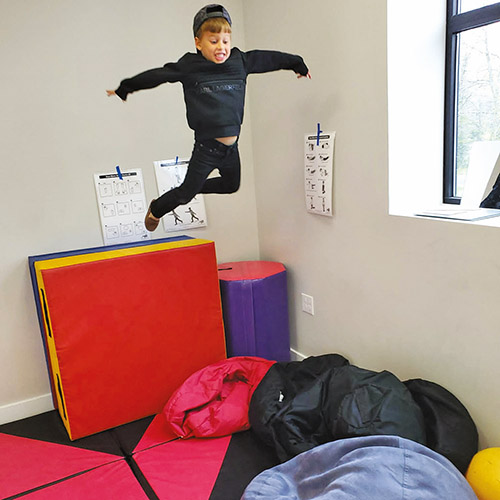


(Courtesy of The Therapy Place)
Question: How do I know if my child is having behavioral difficulties, or if there are real sensory issues going on?
Answer: (provided by Leah Gross, OTR/L Founder and Director of Occupational Therapy at The Therapy Place)
Many times sensory and behavioral issues are intertwined; when a child’s sensory needs aren’t being met, the child will begin to act out in a behavioral manner. If a child is only behavioral at home, or only at school, then we can assume this is happening based on the environment. If the child isn’t sensory seeking throughout all environments, usually that tells us that it’s not a sensory issue. However, there are different demands in different environments. For example, at school, a child has to follow a very specific structure. At home there are usually less demands. Therefore, there might be different behaviors in these two different settings, making it tricky to really discern the difference between a behavioral and sensory issue.
The sensory child will always be seeking sensory information from his surroundings. He will always be moving—touching and feeling things, jumping, running, rolling, pushing, pulling etc. He is always looking for proprioceptive input (the activation of muscles). The child who isn’t given enough attention in the sensory world looks sleepy because he’s not getting enough sensory input. He’s in an under-aroused state, meaning he’s not activating his body. He often sits quietly and is less attentive. We would consider this to be a dysregulated state. Sensory regulation refers to a child at their best state of attentiveness. If a child is not at his best state of attentiveness, then he’s either under- or over-aroused. He will present himself as very spaced out and not “with it.” This child would benefit from sensory input to wake up their body. Many times we try a 21-day diet where we give a child consistent sensory input for 5-10 minute two times a day. If this is done consistently, it will build neural networks in the child’s brain and we will see a decrease in the sensory seeking activities.
Answer: (Shira, OT at The Therapy Place)
Sensory processing issues usually lead to learned behaviors because the child “learns” how to react in a maladaptive way. A child typically needs some behavioral support when working on sensory processing so that they can relearn how to adapt their behaviors to a more predictable and comfortable sensory environment. There are a few easy ways to help decipher what exactly your child is struggling with. If the child’s issues have been present since birth, it is more likely a sensory issue. For a sensory child, triggers are typically environmental in nature. They feel environmentally overwhelmed (example: child may not be able to handle the sound or light; child may retreat, may have outburst, may be “out of it,” may run around and bother everyone, annoyingly touch. The child is looking for more “feeling” from the environment).
Answer: (Miri Parnes, Therapist at The Therapy Place)
When there is an observable behavior, we have to identify the trigger for the behavior. To help identify this, ask yourself “what are the ABC’s for this behavior?”
A-antecedent: what happened before the behavior happened?
B- What did the behavior look like?
C-What happened after the behavior—what mood is the child in? What helped them calm down?
If the behavior is based on a sensory dysfunction, the behaviors will be very distinct and not at random. They will fall into one of these two categories: Avoiding behaviors/high arousal or seeking behaviors/low arousal. The avoiding behaviors/high arousal child will over process sensory information and be in a state of fight, flight and freeze. These children can act rigid and aggressive. They often have difficulty with transitions, like to control things, or avoid things. The seeking behaviors/low arousal child will crave sensory input. This child loves to touch things, enjoys crashing, jumping, and moving around.
Behavioral issues might involve dysregulation behaviors or learned behaviors. Dysregulation behaviors would be when a child is dysregulated due to being tired, hungry, angry, worried or lonely. When a child is presented with too much of a challenge, they display frustration which results in being angry, violent etc. Learned behaviors are when a child engages in a behavior for the purpose of getting a physical or emotional response.
If you’re concerned about a specific child, the best way to identify what the issue is is to get an occupational therapy evaluation. A therapist will be able to weed out the difference between behavioral and sensory issues. Please reach out to The Therapy Place office at (732) 813-4263 if you would like a consultation for your child.











